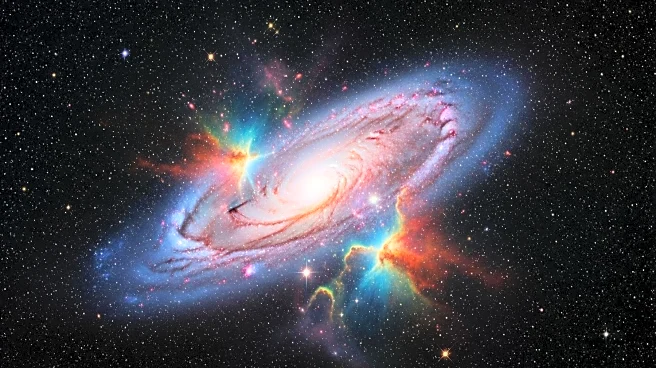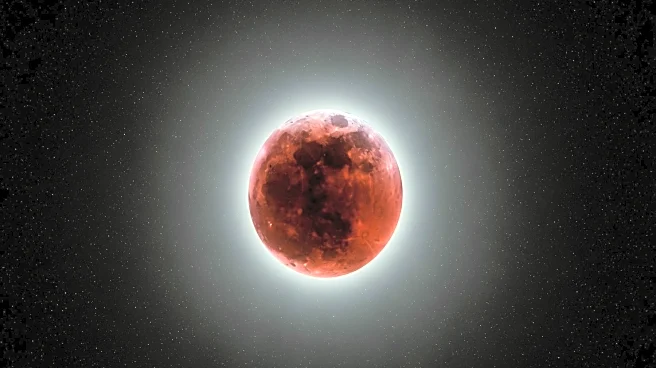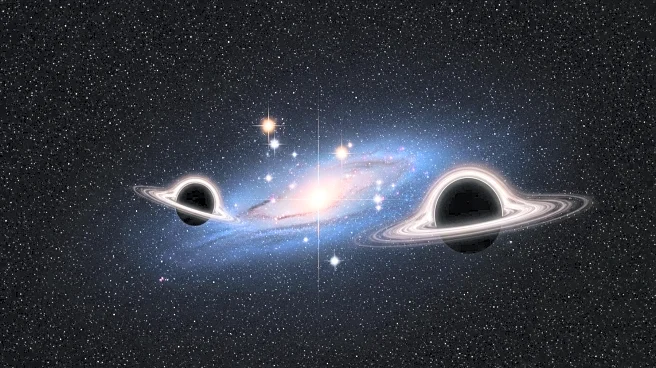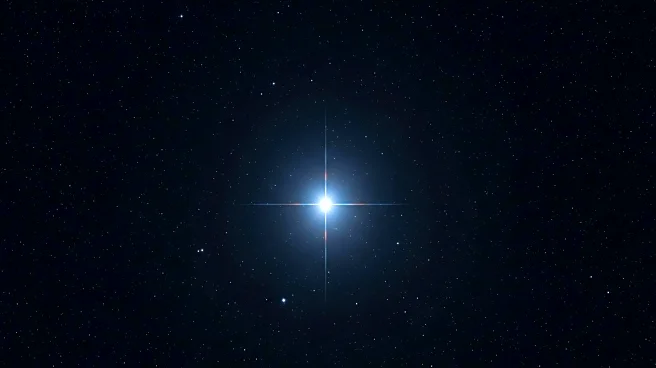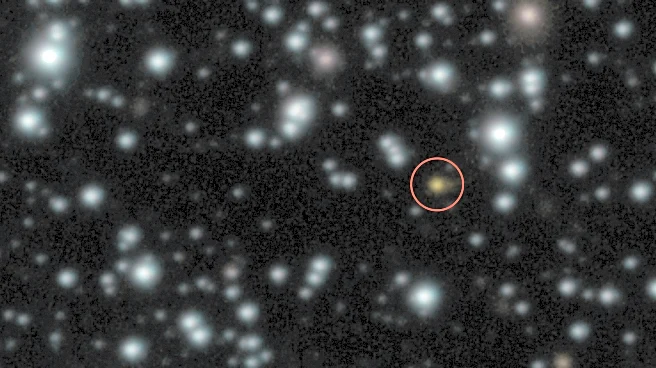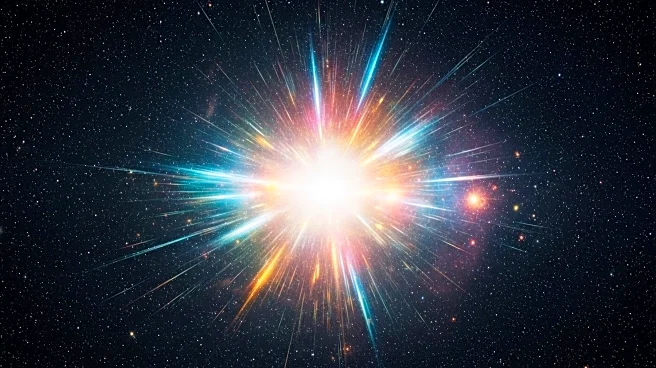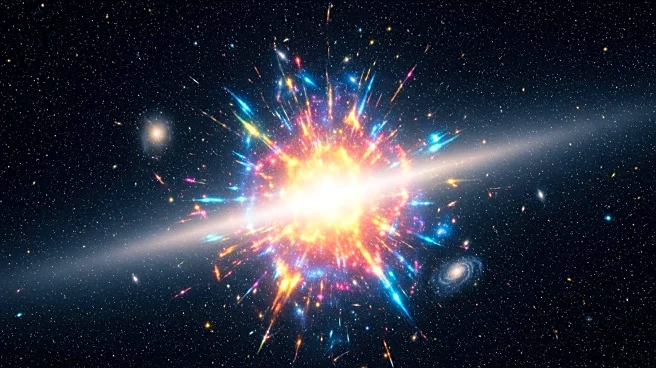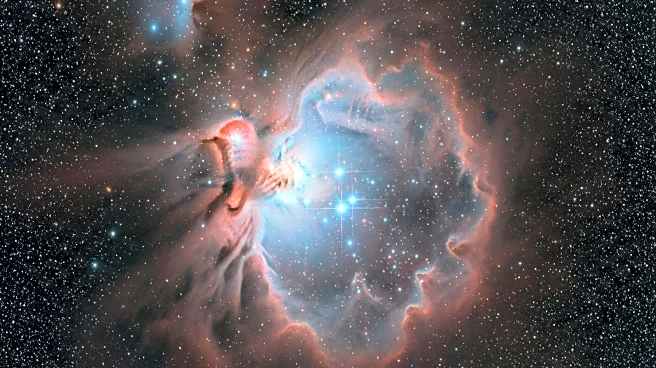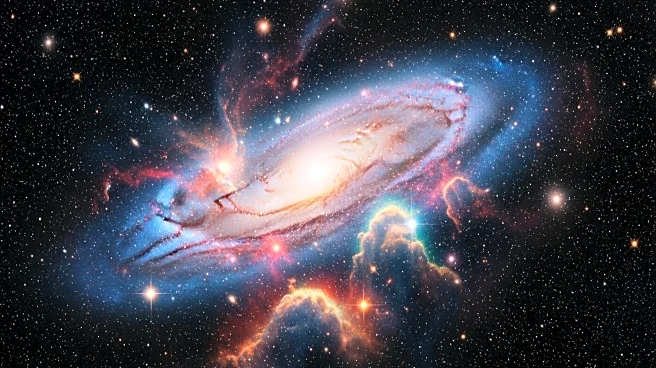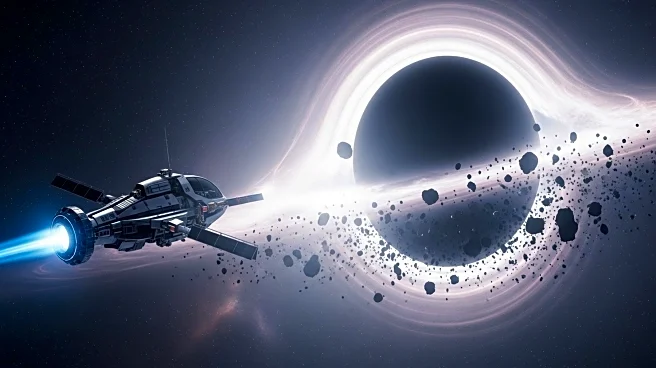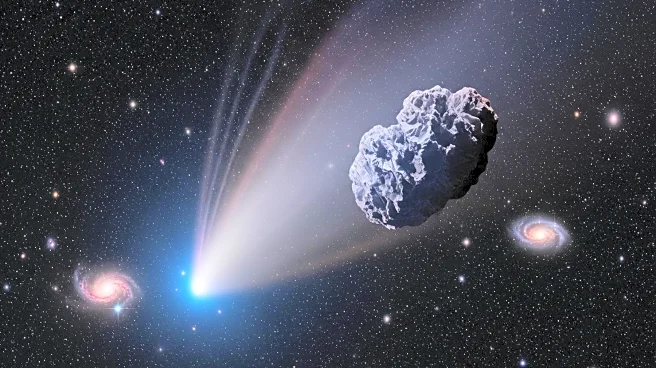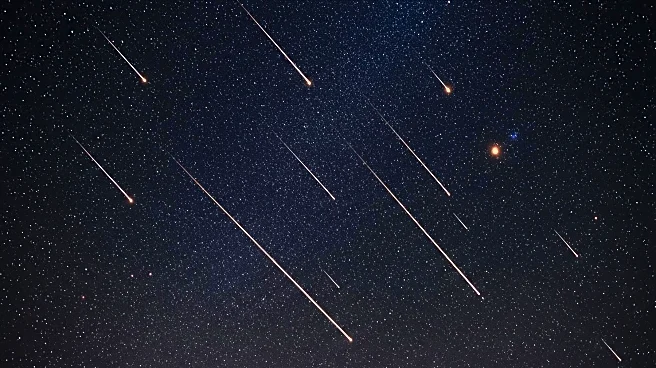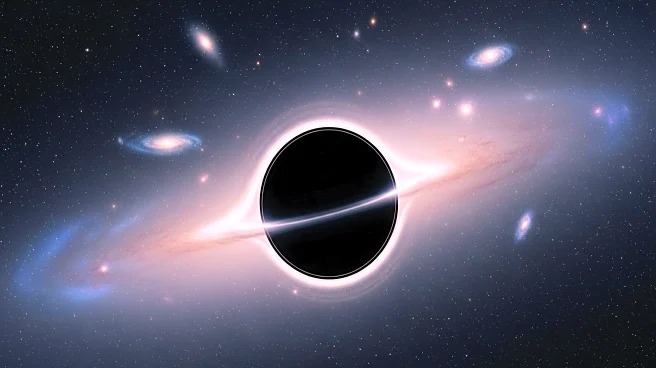What is the story about?
What's Happening?
Astronomers are investigating a powerful and long-lasting gamma ray explosion detected outside our galaxy. Unlike typical gamma ray bursts, which last only minutes or milliseconds, this event persisted for a day, baffling scientists. The unusual nature of the explosion has prompted further observations to determine its origin and characteristics. Telescopes on Earth and in space, including the Hubble Space Telescope, are collaborating to study this high-energy radiation event, which was first observed in July. The findings were published in the Astrophysical Journal Letters, highlighting the need for more data to understand this cosmic anomaly.
Why It's Important?
This gamma ray explosion challenges existing theories about the behavior of such cosmic events, which are typically associated with dying stars or black holes. The prolonged duration of the burst suggests a potentially new mechanism or source, prompting scientists to reconsider their understanding of gamma ray emissions. The event's study could lead to significant advancements in astrophysics, offering insights into the processes governing high-energy phenomena in the universe. Understanding these bursts is crucial for comprehending the life cycles of stars and the dynamics of galaxies, impacting future research and exploration in space science.
AI Generated Content
Do you find this article useful?
